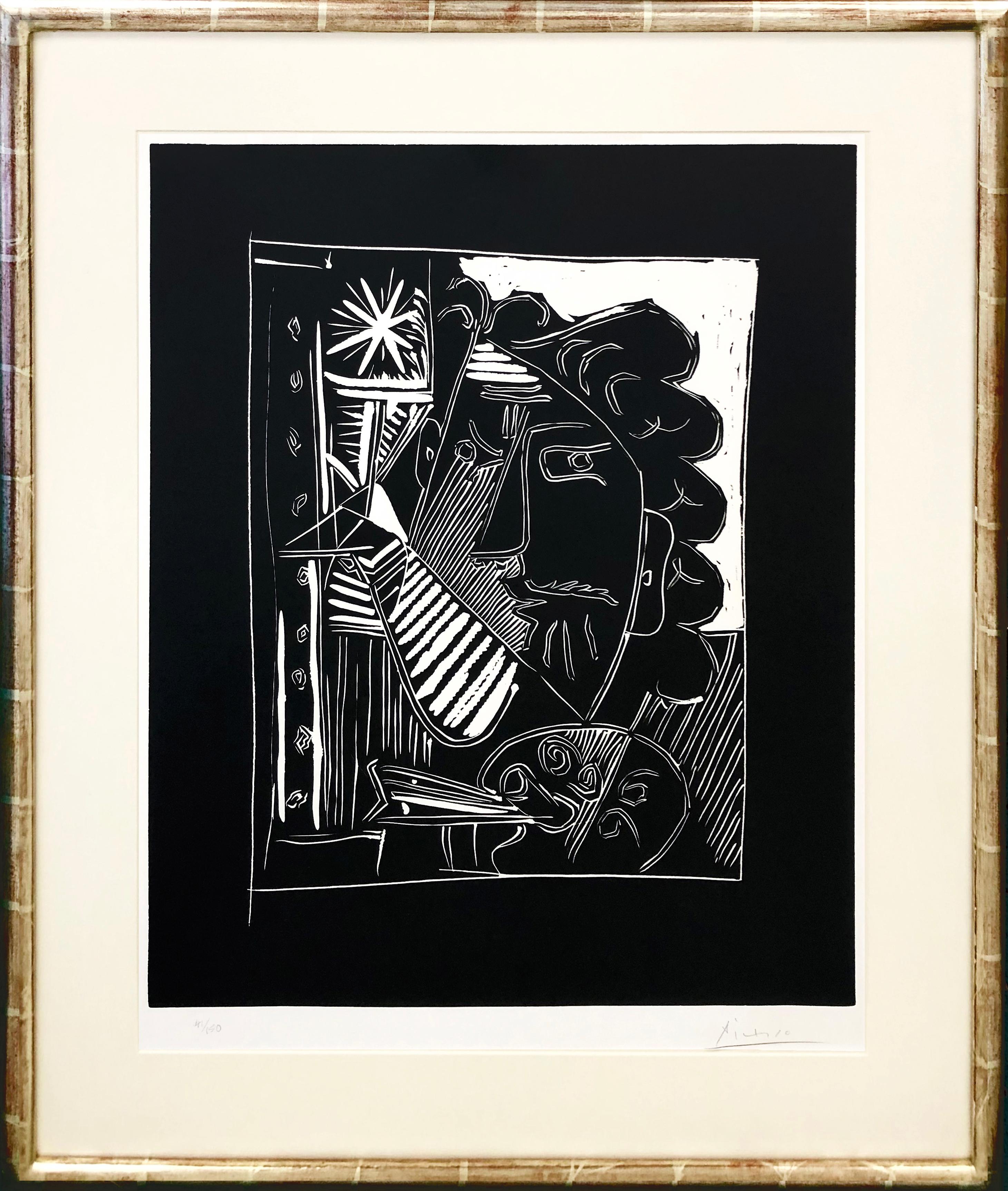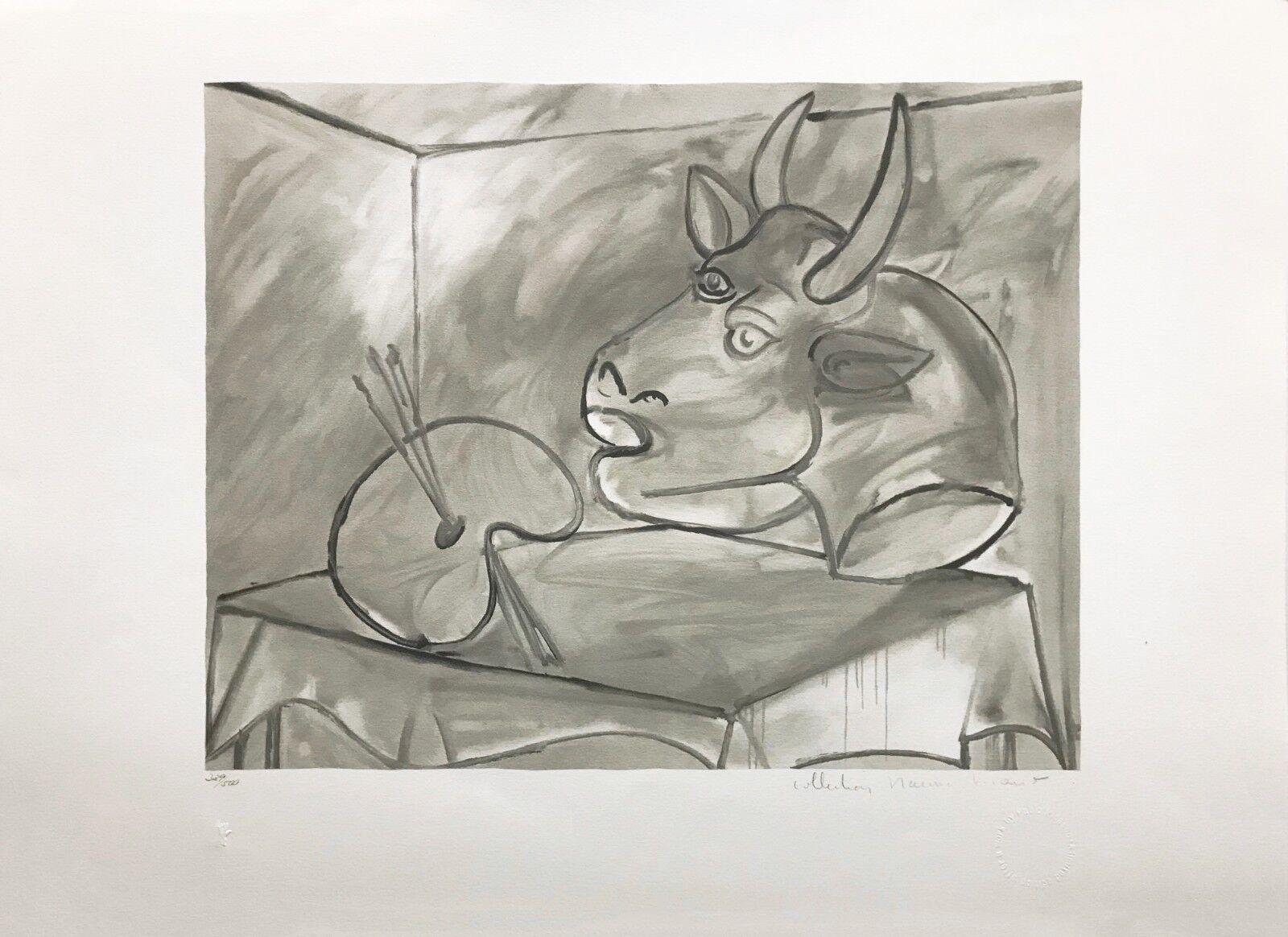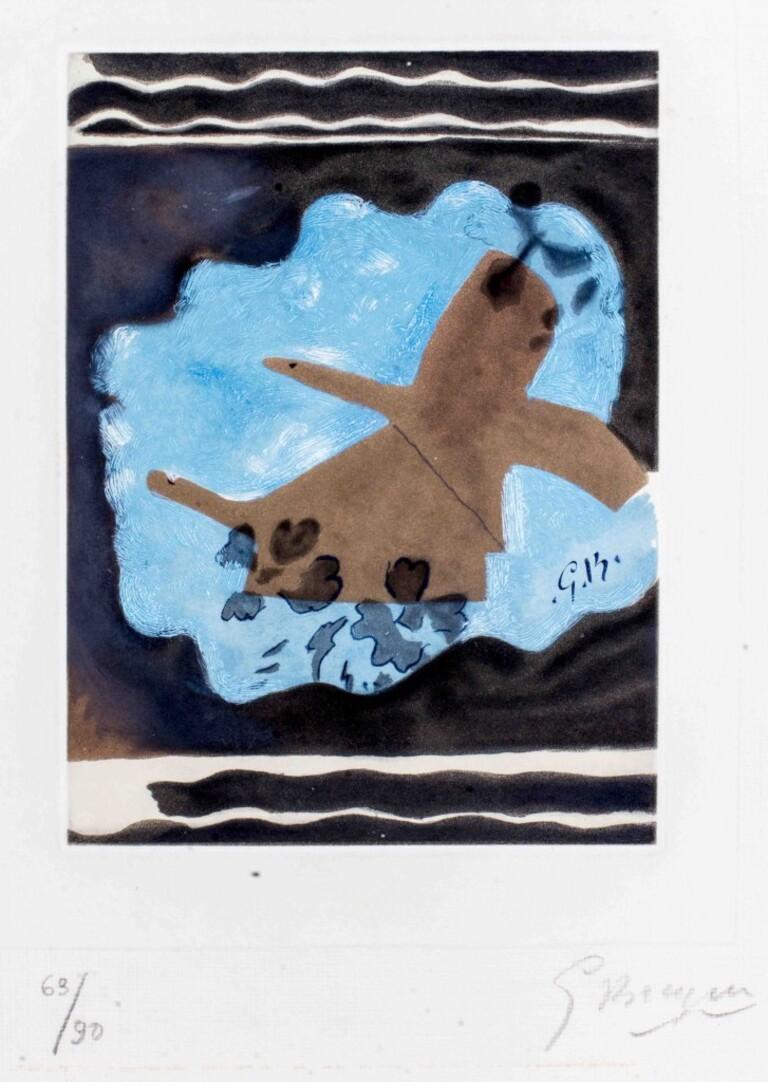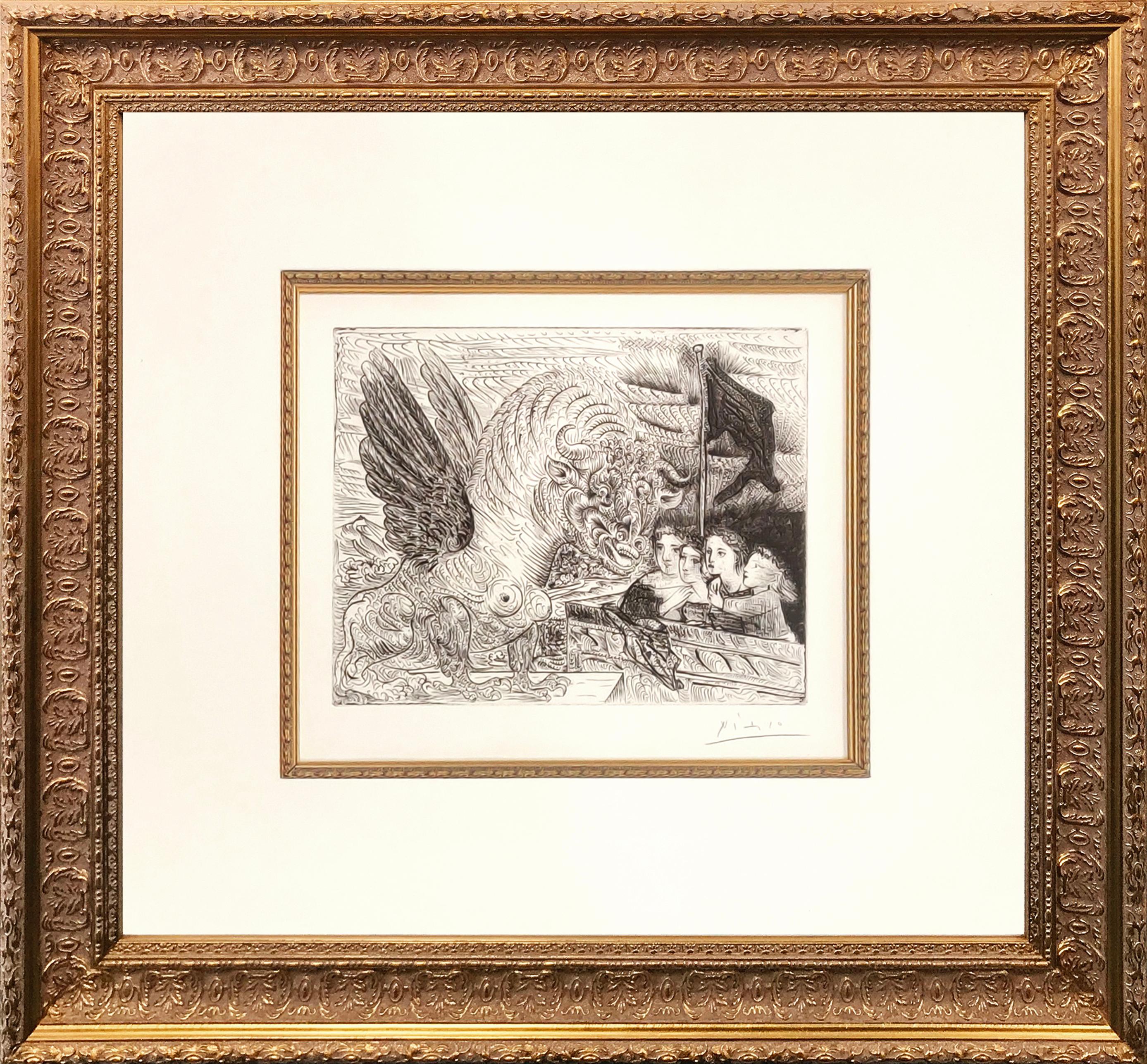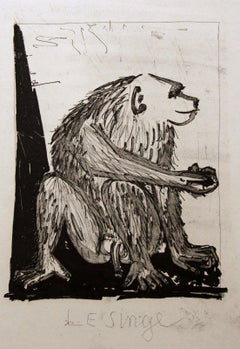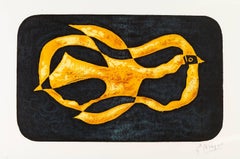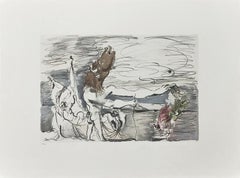Birds - Original Lithograph by Georges Braque - 1955
View Similar Items
Want more images or videos?
Request additional images or videos from the seller
1 of 7
Georges BraqueBirds - Original Lithograph by Georges Braque - 19551955
1955
About the Item
- Creator:Georges Braque (1882 - 1963, French)
- Creation Year:1955
- Dimensions:Height: 13.78 in (35 cm)Width: 16.93 in (43 cm)Depth: 0.04 in (1 mm)
- Medium:
- Movement & Style:
- Period:
- Condition:Insurance may be requested by customers as additional service, contact us for more information.
- Gallery Location:Roma, IT
- Reference Number:Seller: M-1065501stDibs: LU65036184662
About the Seller
4.9
Platinum Seller
These expertly vetted sellers are 1stDibs' most experienced sellers and are rated highest by our customers.
1stDibs seller since 2017
6,749 sales on 1stDibs
Typical response time: 2 hours
More From This SellerView All
- Migration - Etching by Georges Braque - 1962By Georges BraqueLocated in Roma, IT" Migration " is an etching realized by Georges Braque in 1962. The print is hand signed and numbered. This is an edition of 90 prints. Bibliography: D. Vallier, Braque : l'oeuvr...Category
1960s Cubist Animal Prints
MaterialsEtching
- Le Singe - Etching by Pablo Picasso - 1940sBy Pablo PicassoLocated in Roma, ITNot Signed. Not Numbered. Edition of 225 pieces. Etching - aquatint. Belongs to the Suite "Histoire Naturelle de Buffon". Catalogue Bloch n.339. Passepartout included.Category
1940s Cubist Figurative Prints
MaterialsEtching, Paper
- Insects - Pair of Original Lithographs by Emil Hochdanz- 1868-1869By Emil HochdanzLocated in Roma, ITInsect is an original pair of modern artwork realized in 1868-1869 by the German atist E. Hochdanz Hand watercolored lithograph. Printed on plate of both artworks: Art Anst.v E.Ho...Category
1860s Modern Animal Prints
MaterialsLithograph
- Flora and Fauna - Pair of Original Lithographs by Emil Hochdanz- 1869By Emil HochdanzLocated in Roma, ITFlora and fauna is an original pair of modern artwork realized in 1869 by the German atist E. Hochdanz. Hand watercolored lithograph. Printed on plate of both artworks: Art Anst.v ...Category
1860s Modern Animal Prints
MaterialsLithograph
$439 Sale Price20% Off - Insects - Pair of Original Lithographs by Emil Hochdanz- 1868By Emil HochdanzLocated in Roma, ITInsect is an original pair of modern artwork realized in 1868 by the German atist E. Hochdanz Hand watercolored lithograph. Printed on plate of both artworks: Art Anst.v E.Hochdan...Category
1860s Modern Animal Prints
MaterialsLithograph
$439 Sale Price20% Off - Ostrich - Original Lithograph by Georges Bastia - 1950sLocated in Roma, ITOstrich is an original lithograph artwork on paper realized by Georges Bastia (1904-1980)in the 1950s. Signed on the lower right. Good Conditions.Category
1950s Modern Animal Prints
MaterialsLithograph
$230 Sale Price30% Off
You May Also Like
- After Georges Braque - Antiborée - LithographLocated in Collonge Bellerive, Geneve, CHLithograph after Georges Braque. Signed in the plate Edition of 150 Dimensions: 76 x 117 cm Bibliography: « Les Métamorphoses de Braque» of Heger de Loewenfeld and Raphaël de Cuttoli , Editions FAC, Paris, 1989. In 1961 Georges Braque decided with his laidary friend Heger de Loewenfeld to pick up certain of his works to in order to create artworks, this beautiful litograph is one of them. Héméra in the Mythology: In Greek mythology Hemera was the personification of day and one of the Greek primordial deities. She is the goddess of the daytime and, according to Hesiod, the daughter of Erebus and Nyx (the goddess of night). Hemera is remarked upon in Cicero's De Natura Deorum, where it is logically determined that Dies (Hemera) must be a god, if Uranus is a god. The poet Bacchylides states that Nyx and Chronos are the parents, but Hyginus in his preface to the Fabulae mentions Chaos as the mother/father and Nyx as her sister. She was the female counterpart of her brother and consort, Aether (Light), but neither of them figured actively in myth or cult. Hyginus lists their children as Uranus, Gaia, and Thalassa (the primordial sea goddess), while Hesiod only lists Thalassa as their child. The father of Cubism Three Cubist that distinguishes art historian periods were initiated and developed by Georges Braque: The Cubist Cézanne (1907-1909), Executive (1909-1912) and synthetic (1912-1922). Post-Impressionist and fawn, Braque no longer adheres to the contingency of a decorative way or the other. Cézanne’s paintings exhibited at the Grand Palais during the retrospective of 1907 are a revelation: Cézanne sought and invented a pictorial language. In his footsteps, Braque went to the South with the reasons of the Master. He returned with Estaque landscapes and surprising Ciotat it keeps Cezanne geometric model and retains the “passages” continuity from one surface to another to create the sensation of “turning around” of the object represented. But he wants to go after the consequences of the vision of Cezanne. In his paintings Houses in L’Estaque (1908) it simplifies the volumes of houses, neglects detail by removing doors and windows: the plastic rhythm that builds the table. Large Nude , a masterpiece of the period, can be considered the first work of Cézanne cubism . Systematizing and deepening Braque discoveries open the door analytical cubism. In 1909, his painting became more cerebral than sensual. The pattern is recreated in the two-dimensionality of the canvas, leaving aside any illusionistic perspective. In Still Life with Violin, objects are analyzed facets according to their characteristic elements, each facet referring to a particular view of the object. There are so many facets of points selected view: Table reflects the knowledge of the object and the ubiquity of the eye. Moreover, Braque is looking for the essence of the objects in the world rather than their contingency, which explains the absence of light source and use of muted colors (gray, ocher), contingent aspects of the object . But formal logic has stepped facets, erased any anecdote to the object and ultimately led to his painting a hermetic more marked on the edge of abstraction (see the series of Castle Roche-Guyon ). Braque, anxious to keep the concrete and refusing at all costs that the logic of Cubism takes the paintings to abstract, reintroduced signs of reality in his paintings in 1912 marks the beginning of Synthetic Cubism. Historians speak of “signs of real” rather than reality because what interests Braque, this is not to put reality into a table, but to create a painting which, by its language, refers to the real. To do this, he invented two major techniques XX th century inclusions and contributions. The inclusions consist of painting objects that have no real depth, materials (wallpaper in Nature morte aux playing cards faux wood is a pictorial inclusion) or letters (calligraphic inclusion in Portuguese ), made first brush and a few months later stencil. Contributions are defined in contrast with the collage on canvas of foreign materials: glued or sand paper, sawdust, etc.. Regarding the collages, Braque used for the first time in September 1912 a piece of adhesive paper imitating faux wood Compote...Category
1950s Cubist Animal Prints
MaterialsLithograph
- MINOTAURE AVEUGLE CONDUIT PAR UNE PETITE FILLEBy (after) Pablo PicassoLocated in Aventura, FLSelected from the personal collection inherited by Marina Picasso, Pablo Picasso's granddaughter. After Pablo Picasso's death, his granddaughter Marina authorized the printing of t...Category
1980s Cubist Animal Prints
MaterialsLithograph, Paper
$1,025 Sale Price50% Off - NATURE MORTE A LA PALETTE ET A LA TETEBy (after) Pablo PicassoLocated in Aventura, FLSelected from the personal collection inherited by Marina Picasso, Pablo Picasso's granddaughter. After Pablo Picasso's death, his granddaughter Marina authorized the printing of t...Category
1980s Cubist Animal Prints
MaterialsLithograph, Paper
$1,025 Sale Price50% Off - ETUDES DES MAINS ET COLOMBEBy (after) Pablo PicassoLocated in Aventura, FLSelected from the personal collection inherited by Marina Picasso, Pablo Picasso's granddaughter. After Pablo Picasso's death, his granddaughter Marina authorized the printing of t...Category
1980s Cubist Animal Prints
MaterialsLithograph, Paper
$1,225 Sale Price50% Off - PIGEONSBy (after) Pablo PicassoLocated in Aventura, FLSelected from the personal collection inherited by Marina Picasso, Pablo Picasso's granddaughter. After Pablo Picasso's death, his granddaughter Marina authorized the printing of t...Category
1980s Cubist Animal Prints
MaterialsPaper, Lithograph
$1,025 Sale Price50% Off - La Fille aux OiesBy Jean-Emile LaboureurLocated in New York, NYJean-Emile Laboureur (1877-1943), La Fille aux Oies, engraving, 1916, signed in pencil lower left, numbered (4/40) lower right and inscribed “imp,” also titled lower left margin edge...Category
1910s Cubist Figurative Prints
MaterialsEngraving
